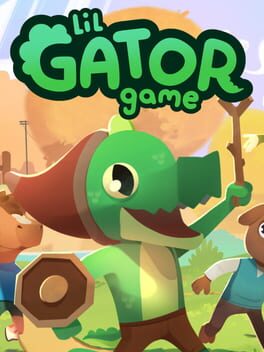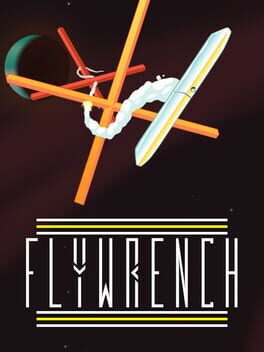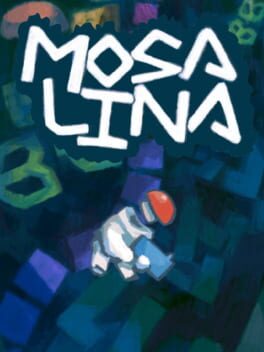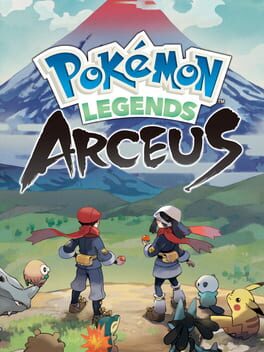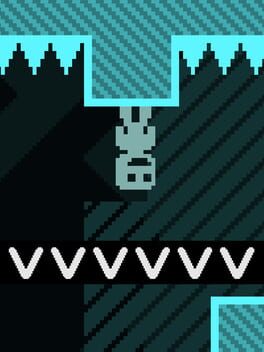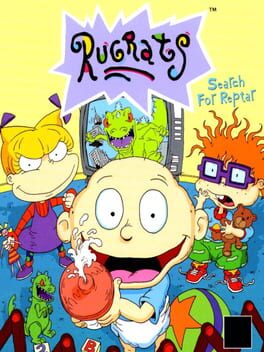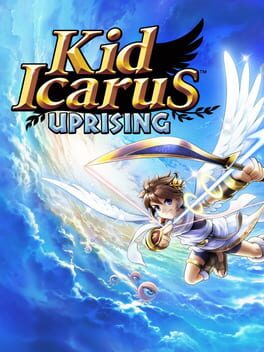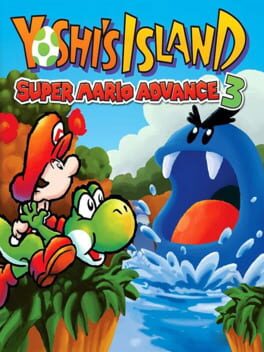GirambQuamb
2022
2015
I tend to favour the term "underappreciated" over "underrated" when describing games, and I think Flywrench falls into that category. No doubt that the people who play it think it's great, but the problem is that not enough people seem to appreciate this wonderfully tight package.
It's tough to sell someone on a game most succinctly described as "Flappy Bird meets precision platforming," but I think this game really deserves a place among the likes of Celeste and Super Meat Boy. It's rare to find a precision game of this quality even in 2022.
What I think tends to shoo your typical platforming masochists away from Flywrench is the fact that it's not a traditional platforming engine in the slightest. But at its core it shares much of that design philosophy. Levels are clear in objective but hard in execution, restarts are quick and seamless, and reaching the end of a level can be such a hit of dopamine you might need to take a breather.
While the difficulty spike on the last set of levels is a little much, I can't even fault it for that. Once you've learned all the mechanics Flywrench takes off the training wheels and really lets loose. It's something that I wish more games would do in fact. Often times you're introduced to mechanic after mechanic only for the game to end before they all come together. I'm looking at you, Slime-San.
One could also argue that the game is a bit short - I beat all 170 levels in about 2 hours of gameplay - but even that can't be too much of a negative considering the extra modes, challenges and achievements available to the most hardcore players. There's even Steam Workshop support for extra levels, though I can't speak to the quality of those.
I often find myself wishing for more platformers with a focus on precision, but this game proves that you can tweak the formula and still end up with something that captures that same magic.
It's tough to sell someone on a game most succinctly described as "Flappy Bird meets precision platforming," but I think this game really deserves a place among the likes of Celeste and Super Meat Boy. It's rare to find a precision game of this quality even in 2022.
What I think tends to shoo your typical platforming masochists away from Flywrench is the fact that it's not a traditional platforming engine in the slightest. But at its core it shares much of that design philosophy. Levels are clear in objective but hard in execution, restarts are quick and seamless, and reaching the end of a level can be such a hit of dopamine you might need to take a breather.
While the difficulty spike on the last set of levels is a little much, I can't even fault it for that. Once you've learned all the mechanics Flywrench takes off the training wheels and really lets loose. It's something that I wish more games would do in fact. Often times you're introduced to mechanic after mechanic only for the game to end before they all come together. I'm looking at you, Slime-San.
One could also argue that the game is a bit short - I beat all 170 levels in about 2 hours of gameplay - but even that can't be too much of a negative considering the extra modes, challenges and achievements available to the most hardcore players. There's even Steam Workshop support for extra levels, though I can't speak to the quality of those.
I often find myself wishing for more platformers with a focus on precision, but this game proves that you can tweak the formula and still end up with something that captures that same magic.
2023
A clever game with an interesting format. Players are tasked with completing 9 static levels per run, but the gadgets they're given - and which level they're attempting - is decided at random every time they pass or fail.
Mosa Lina doesn't just want players to experiment, it forces them to. They're expected to try weird and wacky things with the tools at their disposal, and even when plans fail, the notion of this totally could've worked if I had just done it differently is enough to keep any player engaged, let alone when their half-baked plan actually works.
This game thrives on the intrinsic rewards of making the player feel. Even beyond the stylized art and droning music, the gameplay loop alone brings feelings of resourcefulness, bravery, and dexterity. If you're looking for a cheap game that makes your brain feel big, Mosa Lina is a no-brainer.
Mosa Lina doesn't just want players to experiment, it forces them to. They're expected to try weird and wacky things with the tools at their disposal, and even when plans fail, the notion of this totally could've worked if I had just done it differently is enough to keep any player engaged, let alone when their half-baked plan actually works.
This game thrives on the intrinsic rewards of making the player feel. Even beyond the stylized art and droning music, the gameplay loop alone brings feelings of resourcefulness, bravery, and dexterity. If you're looking for a cheap game that makes your brain feel big, Mosa Lina is a no-brainer.
Moment-to-Moment Gameplay: Fantastic! Great twist on the regular formula. Fun to sneak around and throw balls at the back of Teddiursa's head. It's unfortunate then that this is constantly interrupted by the...
Story: Dumb and repetitive! There's a million characters and I only remember like two of their names. You do the same shit over and over until the last hour where you do different shit over and over.
Boss Fights: Cool, but a little same-y. Wish there was more variety and more fights in general.
Difficulty: It's a Pokemon game... My team was like 15 levels below the final guys I was fighting.
Post-Game: Wouldn't know yet. Not all that inclined at the moment, but I have to imagine that this is where I can finally enjoy the moment-to-moment gameplay in peace.
Nitpick: Why would the button that opens the map not close it? Stupid! Dumb!
Overall: Worth playing if you're a pokemon fan, and even if you're not you might enjoy it more than the regular titles. I appreciate the step in the right direction in terms of doing something new, but it leaves a lot to be desired.
Story: Dumb and repetitive! There's a million characters and I only remember like two of their names. You do the same shit over and over until the last hour where you do different shit over and over.
Boss Fights: Cool, but a little same-y. Wish there was more variety and more fights in general.
Difficulty: It's a Pokemon game... My team was like 15 levels below the final guys I was fighting.
Post-Game: Wouldn't know yet. Not all that inclined at the moment, but I have to imagine that this is where I can finally enjoy the moment-to-moment gameplay in peace.
Nitpick: Why would the button that opens the map not close it? Stupid! Dumb!
Overall: Worth playing if you're a pokemon fan, and even if you're not you might enjoy it more than the regular titles. I appreciate the step in the right direction in terms of doing something new, but it leaves a lot to be desired.
1986
Played through pretty quickly with a walkthrough by my side because I wanted to learn the randomizer for this game. It's hard! Beyond the normal critique of "how would anyone know how to do any of this," the game's just difficult. Plenty of rooms that are aggravatingly arranged.
All that being said, there's some surprising mechanical depth to the less-freeform-than-alttp movement, and it's very satisfying to play well.
Here's hoping the randomizer has some QoL settings...
All that being said, there's some surprising mechanical depth to the less-freeform-than-alttp movement, and it's very satisfying to play well.
Here's hoping the randomizer has some QoL settings...
2023
To say that the movement in Pseudoregalia does all the heavy lifting would be at least slightly disingenuous, but it cannot be downplayed how smooth and expressive the traversal is. The depth at play here is one thing; there's so many advanced techniques and interesting ways to progress through rooms that one could get it in their head that they're sequence breaking. Hell, they might be.
But what really solidifies this as a must-play - the true testament to how wonderfully designed this package is - is how much the rooms and map compliment said movement.
Pseudoregalia expects the player to explore, but more than that it expects the player to invent. Once all the abilities are unlocked, there's no need to take intended paths through its interconnected areas. Players forge their own paths by chaining wall-kicks, canceling ground pounds and maybe even learning how busted side-flips are. Nothing feels out of reach, and everything feels within the realm of possibility when it comes to level layouts.
This game isn't perfect. There's no map system (it's coming in an update), the game is relatively short, and aside from two specific encounters combat isn't particularly engaging. Sore spots, for sure. One could even make the argument that the low polygon count and low resolution textures make the game a bit bland looking, though I'd counter that with it being part of the N64-inspired charm. It truly doesn't matter anyway. To say these blemishes take away from the joy of playing... That's more than slightly disingenuous.
This game is a masterfully tight and well-crafted experience. It's a blast to control and a joy to discover. Absolutely worth the play whether or not you're planning on jacking off to the goat lady.
But what really solidifies this as a must-play - the true testament to how wonderfully designed this package is - is how much the rooms and map compliment said movement.
Pseudoregalia expects the player to explore, but more than that it expects the player to invent. Once all the abilities are unlocked, there's no need to take intended paths through its interconnected areas. Players forge their own paths by chaining wall-kicks, canceling ground pounds and maybe even learning how busted side-flips are. Nothing feels out of reach, and everything feels within the realm of possibility when it comes to level layouts.
This game isn't perfect. There's no map system (it's coming in an update), the game is relatively short, and aside from two specific encounters combat isn't particularly engaging. Sore spots, for sure. One could even make the argument that the low polygon count and low resolution textures make the game a bit bland looking, though I'd counter that with it being part of the N64-inspired charm. It truly doesn't matter anyway. To say these blemishes take away from the joy of playing... That's more than slightly disingenuous.
This game is a masterfully tight and well-crafted experience. It's a blast to control and a joy to discover. Absolutely worth the play whether or not you're planning on jacking off to the goat lady.
2010
Been a while since I've played this one. A classic indie banger! Wonderfully crafted precision "platforming" with an interesting bunch of gimmicks that don't overstay their welcome.
The greatest praise I can give this game is how intuitive the mechanics all feel. Through both their simplicity and the environments in which they're taught, things like gravity-flipping, screen-wrapping, platform-disintegrating and more are all very easy to pick up.
My biggest complaint is that it's short. I can grind for time trials and Super Gravitron runs, but otherwise there's not too much else to do post-game aside from play it again. At least that's incentivized via death count related achievements.
Amazing soundtrack too!
The greatest praise I can give this game is how intuitive the mechanics all feel. Through both their simplicity and the environments in which they're taught, things like gravity-flipping, screen-wrapping, platform-disintegrating and more are all very easy to pick up.
My biggest complaint is that it's short. I can grind for time trials and Super Gravitron runs, but otherwise there's not too much else to do post-game aside from play it again. At least that's incentivized via death count related achievements.
Amazing soundtrack too!
Compared to other mediums, video games are harder to sell as members of the so bad it's good club. Something about the agency the player has over their own experience makes it hard to point and laugh at a game with serious flaws.
That being said, this is one of the funniest games I've ever played. A true growing pain in the shift to 3D models, Rugrats: Search for Reptar is clunky, annoying, and way too easy to beat in one sitting. But something about it... The repeating voice lines, the egregiously bad camera, the fact that bumping into a wall makes Tommy recoil - these things make it impossible not to laugh along as you play.
I would not seriously recommend this game, but I would absolutely recommend it in jest. It's all a matter of sharing my sense of humour.
That being said, this is one of the funniest games I've ever played. A true growing pain in the shift to 3D models, Rugrats: Search for Reptar is clunky, annoying, and way too easy to beat in one sitting. But something about it... The repeating voice lines, the egregiously bad camera, the fact that bumping into a wall makes Tommy recoil - these things make it impossible not to laugh along as you play.
I would not seriously recommend this game, but I would absolutely recommend it in jest. It's all a matter of sharing my sense of humour.
2018
When I choose to play Minecraft I’m frequently jumpscared by from-behind arrows launched by cartoon skeletons. Hell, the first time I played Bioshock I was startled by the sound of a projector screen lowering - this was in the introductory segment, before any enemies had appeared. Even multiplayer shooters have my crosshair quivering in intense situations. All this is to say that first person games put me on high alert, let alone games with horror elements. I’ve still enjoyed my share of shooters, even balls-to-the-wall masochist games like Lovely Planet or Devil Daggers, but while DUSK is gracious enough to ask less of me mechanically, it demands much more of me emotionally.
Let’s be clear, I had a blast playing. While, for the sake of my sanity, I had to split each campaign into multiple play-sessions, those short bursts of bloodbath were nothing short of exhilarating. DUSK, with its low-fidelity look of horror and goosebump-inducing sound design, transmits carnage directly into the player's brain - electric guitar and all. Where I find my mind wandering, however, are the aspects of the game I’m certain to never experience.
DUSK has an awful lot going for it, but this is especially true for those who want to get the most out of their purchase. There’s multiple difficulty levels, secrets galore, and the end of each level - all of which can be replayed ad-nauseum once beaten in the campaign - has a plethora of stats for players to grind for. Whether you’re looking to get the fastest time on the hardest difficulty, explore every nook and cranny for secrets, or beat each level without killing a single enemy, there’s something there for everyone. Shockingly, this extends even to scaredy-cats like me.
I took levels slow and cautiously, leading enemies into corridors for easier pickings, and generally shying away from extra challenges so I could get to the end; a well earned breather after all the violence, I think. I did have my moments of catharsis - DUSK forces it upon you when it spawns swarms of enemies in large, open spaces. The point of the matter, however, is that I’ve barely scratched the surface of what this game has to offer, and my poor heart isn’t in it for the long haul. But while the feast offered to hardcore players is something I will happily admire from afar, I’m forced to assume they were handled with care. For all I’ve said about DUSK having it’s more ambitious of players in mind, it’s clear that the blood-lust was crafted for everyone. There’s accessibility options galore, the easiest difficulty is more than fair, and there’s even cheat codes reminiscent of classic games of the genre. Whether I’m getting the full experience or not, the fact that players like me were even thought of at all inspires confidence.
At its core, DUSK is a game of dread and deliverance. Playing on easy mode doesn’t save you from the game’s more petrifying moments, nor does it diminish the more euphoric moments of massacre. Horrors lurk around every corner, and god damn if the plan isn’t to shoot them with a shotgun until they die. The beauty in DUSK are the feelings it evokes regardless of playstyle. However difficult you choose to make that shot, and however many times you plan to take it, it’s guaranteed to make your heart race.
Let’s be clear, I had a blast playing. While, for the sake of my sanity, I had to split each campaign into multiple play-sessions, those short bursts of bloodbath were nothing short of exhilarating. DUSK, with its low-fidelity look of horror and goosebump-inducing sound design, transmits carnage directly into the player's brain - electric guitar and all. Where I find my mind wandering, however, are the aspects of the game I’m certain to never experience.
DUSK has an awful lot going for it, but this is especially true for those who want to get the most out of their purchase. There’s multiple difficulty levels, secrets galore, and the end of each level - all of which can be replayed ad-nauseum once beaten in the campaign - has a plethora of stats for players to grind for. Whether you’re looking to get the fastest time on the hardest difficulty, explore every nook and cranny for secrets, or beat each level without killing a single enemy, there’s something there for everyone. Shockingly, this extends even to scaredy-cats like me.
I took levels slow and cautiously, leading enemies into corridors for easier pickings, and generally shying away from extra challenges so I could get to the end; a well earned breather after all the violence, I think. I did have my moments of catharsis - DUSK forces it upon you when it spawns swarms of enemies in large, open spaces. The point of the matter, however, is that I’ve barely scratched the surface of what this game has to offer, and my poor heart isn’t in it for the long haul. But while the feast offered to hardcore players is something I will happily admire from afar, I’m forced to assume they were handled with care. For all I’ve said about DUSK having it’s more ambitious of players in mind, it’s clear that the blood-lust was crafted for everyone. There’s accessibility options galore, the easiest difficulty is more than fair, and there’s even cheat codes reminiscent of classic games of the genre. Whether I’m getting the full experience or not, the fact that players like me were even thought of at all inspires confidence.
At its core, DUSK is a game of dread and deliverance. Playing on easy mode doesn’t save you from the game’s more petrifying moments, nor does it diminish the more euphoric moments of massacre. Horrors lurk around every corner, and god damn if the plan isn’t to shoot them with a shotgun until they die. The beauty in DUSK are the feelings it evokes regardless of playstyle. However difficult you choose to make that shot, and however many times you plan to take it, it’s guaranteed to make your heart race.
2018
I can only hope that given enough time I'm left with just the good memories of this game. It's superb by 1991 standards. The exploration, feeling of progress, humour and charm are amazing. Putting it all together made it hard to put this game down.
But I can't help but be left with a bit of a sour taste in my mouth, and it all stems from the dungeons. At times it felt like the game was trying to frustrate me with the enemy placement, and at the worst of times it seemed that it was playing a practical joke on me. Having two levers - one that opens the path forward, and one that drops a bunch of enemies on you - is just... not fun. It's as if the game's comedy has a twisted side.
It's beyond good for the time. No question about that. Timeless? Hard to say. It's at least most of the way there. The highs are just so high compared to the lows. It really does suck you in! Heck, even the aforementioned dungeons have their shining moments. Just don't let that distract you from the cracks in the wall; You may just wander circles around Dark Palace forever...
But I can't help but be left with a bit of a sour taste in my mouth, and it all stems from the dungeons. At times it felt like the game was trying to frustrate me with the enemy placement, and at the worst of times it seemed that it was playing a practical joke on me. Having two levers - one that opens the path forward, and one that drops a bunch of enemies on you - is just... not fun. It's as if the game's comedy has a twisted side.
It's beyond good for the time. No question about that. Timeless? Hard to say. It's at least most of the way there. The highs are just so high compared to the lows. It really does suck you in! Heck, even the aforementioned dungeons have their shining moments. Just don't let that distract you from the cracks in the wall; You may just wander circles around Dark Palace forever...
2012
While it's very difficult to cope with the controls at first - namely in land battles - this game is worth the initial struggles. One of the very best the 3DS has to offer, and almost certainly the best action game.
It's oozing with charm, the gameplay manages to have a good amount of depth without bogging down the pacing, and gosh darn it it's just fun. I cracked many a smile during my playthrough.
It's oozing with charm, the gameplay manages to have a good amount of depth without bogging down the pacing, and gosh darn it it's just fun. I cracked many a smile during my playthrough.
1994
Likely don't have anything to say that hasn't already been said. Super Metroid rides along its deep sense of exploration, tough but exhilarating combat, and its mysterious (sometimes dreadful) atmosphere.
It can be frustrating at times for a new player. Some required means of progression call for a walkthrough if time is to be respected. There's some interesting choices towards the end of the game that work against it, namely the screwattack destroying once traversable platforms.
But the game truly is a master class in design. Aside from the obvious, I'd love to point out how well placed the enemies are. Makes backtracking more fun and less mindless.
It can be frustrating at times for a new player. Some required means of progression call for a walkthrough if time is to be respected. There's some interesting choices towards the end of the game that work against it, namely the screwattack destroying once traversable platforms.
But the game truly is a master class in design. Aside from the obvious, I'd love to point out how well placed the enemies are. Makes backtracking more fun and less mindless.
A shining beacon in my ever fading memories of childhood, Yoshi’s Island reenters my adult life as a pastel coloured flashback. The game, boasting its vibrant, cheerful atmosphere, taps directly into blurred memories of car rides home from grandma’s. The joyful sounds of the Yoshis themselves forming songs which evoke late night gaming sessions lit only by a bedside lamp that ought to have been turned off hours ago if I wasn’t to be tired at school in the morning.
My grandmother’s house has since been demolished, and my childhood has since been replaced by an ever growing list of ambitions, obligations, and responsibilities. My Yoshi’s Island cartridge, in contrast, remains the same; it holds the same code needed to run on my Game Boy Advance, and the same save files created all those years ago. Still, even if Yoshi’s Island itself has not changed, the lens through which I’m meant to inspect it, tinted-by-nostalgia as it may be, has been altered by the passage of time.
Games enjoyed in childhood often fail to prove their worth again. Patience is worn thin by frustrating levels, design intentions are rendered moot by modern sensibilities, and on a more enigmatic level, they just don’t feel the same. When the curtain of childlike wonder is pulled back, and our analytical minds are no longer shielded from the experience of actually playing, it takes a hell of a good game to maintain its favour.
Despite this sentiment, Yoshi’s Island manages to both impress me in the modern era of gaming, as well as justify its ineffable worthiness forged by my nostalgia-fueled memories. Set forth by its stunning visuals and maintained by its meticulously crafted gameplay experience, Yoshi’s Island is more than a happy memory, and even more than a timeless classic. It’s one of gaming’s greatest.
Before even a save file has been selected, Yoshi’s Island presents the player with its charm in the form of a storybook-esque movie sequence. Filled with a mix of clay-like models and watercolour backgrounds, the story set forth is simple, the Yoshis must deliver a lost baby Mario to his captured brother and save him from the evil Kamek. What the game makes clear, however, is that the gameplay itself is not merely a result of this story, but a continuation of it.
It’s an obvious statement, asserting that a game’s story continues beyond the intro and into play, but it’s Yoshi’s Island thematic commitment to that notion that drives its charm. Gameplay maintains the watercolour palette, but with a gorgeous art style reminiscent of children’s book illustrations.
Through flowery fields and sparkly caves, tropical lakes and snowy mountains, everything the player sees is oozing childlike charm. Highlights are bright and shadows are faint. Everything smiles, with exceptions only for characters with no mouth or big goofy teeth. Animation is smooth and lively, eyes are dotted and googly, and even the angriest of characters are made to look silly. To be frowning while playing Yoshi’s Island is to be a curmudgeon.
This vibe of the game - its art direction and presentation, the sensory feel it provides - is practically begging to plant itself into a young mind. It’s a visual masterpiece. It’s bright, colourful, and cheery - emanating an aura that thrusts warm and fuzzy feelings upon the player. However, it’s in the more agentive and invisibly-designed aspects of Yoshi’s Island - the things you only notice during gameplay - that the game soars beyond childhood favourite and emerges as a gaming paragon.
Yoshi’s controls are as responsive as they are free. That is to say the myriad of actions the player can take feel natural and are performed with ease. With just the dpad, two face buttons, and two shoulder buttons (the left shoulder button seldom seeing use in my playthrough), the player can perform the following in regular play: Jumping, flutter jumping, sticking Yoshi’s tongue out, spitting out enemies, ground pounding, egg aiming, egg throwing, and stopping your aim reticle from its automatic repositioning.
Despite having so many unique actions - some of which are altered by dpad directions, or holding a button longer - everything works together in an exciting way that avoids overwhelming the player, while still allowing for advanced play. Yoshi’s tongue is used only if an enemy is not in his mouth, and flutter jumps are only performed if he is already in the air, but the ability to throw eggs is independent of both, allowing a skilled player to take aim in more perilous situations.
Level design compliments this freedom of control by means of freedom of directionality. Compared to Super Mario World, Yoshi’s Island manages fewer branching paths and secret exits, but more than makes up for it in its level layouts. Levels go beyond left-to-right; they go up, down, and all around, even within the same section of level. Yoshi flutters his way through vertical climbs, ricochets eggs through maze-like passageways, and even transforms into motorized vehicles to soar through skies and drive down hills.
This variety in obstacle layout does come to bite Yoshi’s Island every once in a while. There’s long pits that a mountain-skiing Yoshi is sure to fall into, and sections to be redone when you learn that lava is insta-kill. To top it off, players going for a perfect score each level are in for a far more intense experience. Collectibles are well hidden, or even lost when damage is taken. But to call these game-ruining would be insincere when that variegation is what makes Yoshi’s Island so special.
Boss fights in particular speak to this. They test the player’s skills in new and exciting ways, all while holding the most charming moments of the game. The world 3 boss in particular subverts expectations, when Kamek - normally one to transform regular enemies into big baddies - uses magic on Yoshi himself, shrinking him down and giving the player the wobbly playing field of Prince Froggy’s innards. It’s moments like these - where novel concepts become novel spectacles, and novel spectacles become novel interactions - that boost Yoshi’s Island into gaming stardom.
But lest I forget the small moments. From the short but catchy overworld music that adds instruments as you progress, to the real sense of urgency when you must rescue a crying baby Mario after taking damage, Yoshi’s Island does more than bridge the gap between my Mad Catz Game Boy Advance light and my newly installed backlit screen mod. It cements itself as a game I was lucky to have played so young, lucky to have played now, and will be lucky to play again.
It takes a hell of a game to prove its worthiness when it’s been fueled by over a decade of vague nostalgia, but as much as my life and the world surrounding it has changed, the only thing that’s changed about Yoshi’s Island is my appreciation for it. Like myself, it has only grown.
My grandmother’s house has since been demolished, and my childhood has since been replaced by an ever growing list of ambitions, obligations, and responsibilities. My Yoshi’s Island cartridge, in contrast, remains the same; it holds the same code needed to run on my Game Boy Advance, and the same save files created all those years ago. Still, even if Yoshi’s Island itself has not changed, the lens through which I’m meant to inspect it, tinted-by-nostalgia as it may be, has been altered by the passage of time.
Games enjoyed in childhood often fail to prove their worth again. Patience is worn thin by frustrating levels, design intentions are rendered moot by modern sensibilities, and on a more enigmatic level, they just don’t feel the same. When the curtain of childlike wonder is pulled back, and our analytical minds are no longer shielded from the experience of actually playing, it takes a hell of a good game to maintain its favour.
Despite this sentiment, Yoshi’s Island manages to both impress me in the modern era of gaming, as well as justify its ineffable worthiness forged by my nostalgia-fueled memories. Set forth by its stunning visuals and maintained by its meticulously crafted gameplay experience, Yoshi’s Island is more than a happy memory, and even more than a timeless classic. It’s one of gaming’s greatest.
Before even a save file has been selected, Yoshi’s Island presents the player with its charm in the form of a storybook-esque movie sequence. Filled with a mix of clay-like models and watercolour backgrounds, the story set forth is simple, the Yoshis must deliver a lost baby Mario to his captured brother and save him from the evil Kamek. What the game makes clear, however, is that the gameplay itself is not merely a result of this story, but a continuation of it.
It’s an obvious statement, asserting that a game’s story continues beyond the intro and into play, but it’s Yoshi’s Island thematic commitment to that notion that drives its charm. Gameplay maintains the watercolour palette, but with a gorgeous art style reminiscent of children’s book illustrations.
Through flowery fields and sparkly caves, tropical lakes and snowy mountains, everything the player sees is oozing childlike charm. Highlights are bright and shadows are faint. Everything smiles, with exceptions only for characters with no mouth or big goofy teeth. Animation is smooth and lively, eyes are dotted and googly, and even the angriest of characters are made to look silly. To be frowning while playing Yoshi’s Island is to be a curmudgeon.
This vibe of the game - its art direction and presentation, the sensory feel it provides - is practically begging to plant itself into a young mind. It’s a visual masterpiece. It’s bright, colourful, and cheery - emanating an aura that thrusts warm and fuzzy feelings upon the player. However, it’s in the more agentive and invisibly-designed aspects of Yoshi’s Island - the things you only notice during gameplay - that the game soars beyond childhood favourite and emerges as a gaming paragon.
Yoshi’s controls are as responsive as they are free. That is to say the myriad of actions the player can take feel natural and are performed with ease. With just the dpad, two face buttons, and two shoulder buttons (the left shoulder button seldom seeing use in my playthrough), the player can perform the following in regular play: Jumping, flutter jumping, sticking Yoshi’s tongue out, spitting out enemies, ground pounding, egg aiming, egg throwing, and stopping your aim reticle from its automatic repositioning.
Despite having so many unique actions - some of which are altered by dpad directions, or holding a button longer - everything works together in an exciting way that avoids overwhelming the player, while still allowing for advanced play. Yoshi’s tongue is used only if an enemy is not in his mouth, and flutter jumps are only performed if he is already in the air, but the ability to throw eggs is independent of both, allowing a skilled player to take aim in more perilous situations.
Level design compliments this freedom of control by means of freedom of directionality. Compared to Super Mario World, Yoshi’s Island manages fewer branching paths and secret exits, but more than makes up for it in its level layouts. Levels go beyond left-to-right; they go up, down, and all around, even within the same section of level. Yoshi flutters his way through vertical climbs, ricochets eggs through maze-like passageways, and even transforms into motorized vehicles to soar through skies and drive down hills.
This variety in obstacle layout does come to bite Yoshi’s Island every once in a while. There’s long pits that a mountain-skiing Yoshi is sure to fall into, and sections to be redone when you learn that lava is insta-kill. To top it off, players going for a perfect score each level are in for a far more intense experience. Collectibles are well hidden, or even lost when damage is taken. But to call these game-ruining would be insincere when that variegation is what makes Yoshi’s Island so special.
Boss fights in particular speak to this. They test the player’s skills in new and exciting ways, all while holding the most charming moments of the game. The world 3 boss in particular subverts expectations, when Kamek - normally one to transform regular enemies into big baddies - uses magic on Yoshi himself, shrinking him down and giving the player the wobbly playing field of Prince Froggy’s innards. It’s moments like these - where novel concepts become novel spectacles, and novel spectacles become novel interactions - that boost Yoshi’s Island into gaming stardom.
But lest I forget the small moments. From the short but catchy overworld music that adds instruments as you progress, to the real sense of urgency when you must rescue a crying baby Mario after taking damage, Yoshi’s Island does more than bridge the gap between my Mad Catz Game Boy Advance light and my newly installed backlit screen mod. It cements itself as a game I was lucky to have played so young, lucky to have played now, and will be lucky to play again.
It takes a hell of a game to prove its worthiness when it’s been fueled by over a decade of vague nostalgia, but as much as my life and the world surrounding it has changed, the only thing that’s changed about Yoshi’s Island is my appreciation for it. Like myself, it has only grown.
2015
Hylics has me very torn. This game has surrealism down to a T. The art style is to die for, the music is wonderfully weird, and the world and dialogue are as confusing as they are morbidly hilarious. But it's the vibe alone that does the heavy lifting.
That vibe is what seems seems to get in the way of Hylics being a joy to actually play. The art, beautiful as it is makes it confusing to tell where your character can and can't go - and that's just regarding overworld movement, let alone the question of where the player is meant to go to progress.
The game is filled to the brim with busywork. Combat aside there's just a lot of wandering around and interacting with everything, which serves well as a means of discovering all there is to see, but doesn't make for very fun or interesting play. Mix that with relatively straightforward combat and a few sections you'll be redoing thanks to enemies that kill you instantly, and suddenly the game feels more like a chore.
None of this is to say that Hylics has to be fun. It's an aesthetic experience - more akin to visiting an art gallery than playing an RPG. I'd happily recommend it to anyone looking for a brief journey into the world of RPG Maker weirdness, but it's just not a game that makes the most of its medium.
That vibe is what seems seems to get in the way of Hylics being a joy to actually play. The art, beautiful as it is makes it confusing to tell where your character can and can't go - and that's just regarding overworld movement, let alone the question of where the player is meant to go to progress.
The game is filled to the brim with busywork. Combat aside there's just a lot of wandering around and interacting with everything, which serves well as a means of discovering all there is to see, but doesn't make for very fun or interesting play. Mix that with relatively straightforward combat and a few sections you'll be redoing thanks to enemies that kill you instantly, and suddenly the game feels more like a chore.
None of this is to say that Hylics has to be fun. It's an aesthetic experience - more akin to visiting an art gallery than playing an RPG. I'd happily recommend it to anyone looking for a brief journey into the world of RPG Maker weirdness, but it's just not a game that makes the most of its medium.
